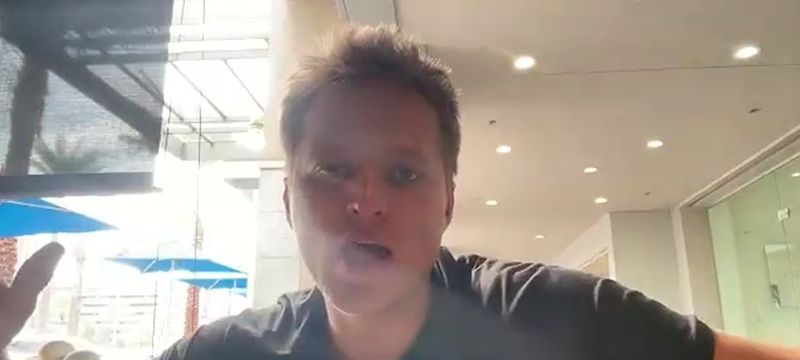
Marko Sipilä teaching key marketing strategies to our upcoming Agency owners
Start With #GCT: Goal, Content, Targeting
Before launching any campaign, clarify your Goals, Content, and Targeting (GCT). This simple framework prevents wasted spend and keeps every ad accountable to results.
Home-service companies almost always want more booked jobs—but you need to define that goal in numbers. For example:
“Generate 20 qualified roofing leads this month at under $50 per lead.”
Goals
Define the outcome and your cost-per-lead target. Clarity here ensures your campaigns are measurable.
Content
Use assets that support that goal. Testimonials, before-and-after photos, videos of your crew, and offers like free estimates all perform well for local services. Match the message to the offer, a video about water-heater replacements should not point to drain cleaning.
Targeting
Keep it simple for budgets under $250/day.
- Use two ad sets: one for stacked interests (home renovation, DIY, etc.) and one for demographic targeting (age 25+ in your service area).
- As budgets grow, layer on remarketing and look-alike audiences.
Craft a Hook That Stops the Scroll
Great ads don’t happen by accident. The highest performers for roofers, plumbers, and landscapers share these traits:
- Call out the city. Start with “Hey, [City Name] homeowners!” to build instant relevance.
- Show the problem. Cracked shingles, flooded basements, dirty siding—visual pain points grab attention fast.
- Promise relief. Use simple, emotional messaging like “Homeowners are getting brand-new roofs and saving big. Find out if you qualify.”
- Mix AI and real footage. AI tools like VO3 or HeyGen can polish your intro, but real clips of your crew and customers build trust.
- Use captions and on-screen text. Many viewers watch on mute, so reinforce the offer visually.
- Tell stories that evoke emotion. Authentic moments always outperform slick, generic ads.
When in doubt, study the Facebook Ads Library and model what’s working in other markets, but never copy direct competitors in your own area.
Budget Like a Pro: Five Ads Per Ad Set
Facebook and Google need data to learn. If you only upload one or two creatives, algorithms dump your entire budget into whichever ad happens to run first.
Follow this rule of thumb:
- Allocate $10/day per creative. A $50/day ad set should have five ads to test multiple hooks and visuals.
- Use ad-set budget optimization. Control spend at the ad-set level to prevent one creative from taking all the budget.
- Watch your metrics. If an ad spends more than 1.5× your target cost per lead without a conversion, pause it. Always replace paused ads so ad sets stay full.
For higher budgets ($250/day+), add remarketing, lookalikes of page engagers, and warm audiences, but never skip strong creative. Weak content wastes every dollar.
Test, Learn, and Iterate
Digital marketing is never “set and forget.” Ads fatigue, algorithms evolve, and offers change by season.
To stay ahead:
- Rotate new creatives regularly. Fresh visuals prevent burnout and spark discovery.
- Reset learning when needed. A small tweak to your hook or headline can reignite performance.
- Use metrics to decide. Track cost per lead, click-through rate, and lead quality—ignore vanity metrics like reach or impressions.
This iterative loop is our MAA framework: Metrics, Analysis, Action.
Run MAA weekly to diagnose issues, test adjustments, and optimize intelligently.
Blend AI With Human Insight
Artificial intelligence can speed up ad production—but it can’t replace strategy.
Use AI as a force multiplier, not an autopilot:
- Leverage AI for the first few seconds. A generated hook can catch attention, but switch quickly to real footage for authenticity.
- Repurpose winning templates. When one format converts, adapt it for new cities or offers.
- Maintain quality control. Review every AI-generated video to ensure it fits the client’s brand and licensing guidelines.
Authenticity builds trust and trust builds conversions.
Deliver Results, Not Reports
Home-service owners don’t care about marketing jargon. They care about ringing phones and booked jobs.
- Communicate clearly. Regularly update clients on what you’re testing and why.
- Set realistic expectations. Campaigns need a few weeks to stabilize. Agree on cost-per-lead goals and commit to daily optimization.
- Hold clients accountable. Ask for photos, video clips, and testimonials. Real assets outperform any AI-generated filler.
Your job isn’t to “run ads”—it’s to produce tangible business outcomes.
Final Thoughts
Great campaigns follow proven systems. Start with GCT to define the goal, back it with meaningful content, and target precisely. Then apply MAA every week to iterate your way to better performance.
For more tested frameworks that connect strategy and execution:
- Learn about building your authority with our Knowledge Panel guide.
- Master cost-effective promotion using the Dollar-a-Day strategy.
- Explore more marketing systems and case studies at BlitzMetrics.com.
When in doubt, look at what’s already working, follow the data, and keep iterating.
That’s how you turn simple ads into predictable growth.
